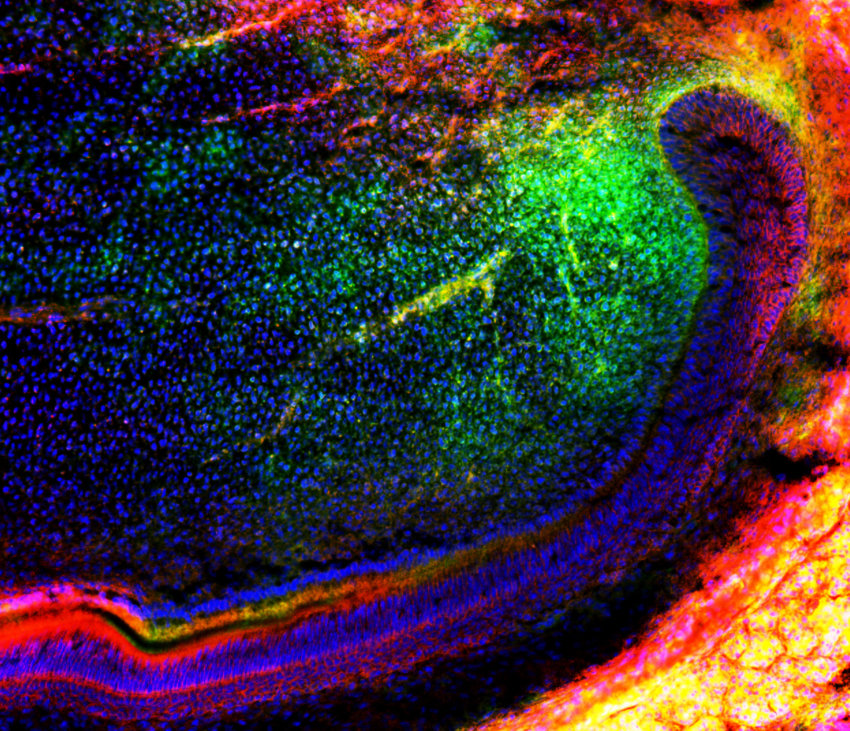Scientists discover new mechanism that could help fix dental cavities in the future
SAN ANTONIO (Aug. 9, 2019) ― An international team of researchers, including a dental professor from UT Health San Antonio, has found a novel mechanism that could possibly offer a new way to repair teeth in the future.
The mechanism involves stem cells, which hold the key to wound healing. Stem cells are unspecialized cells that can develop into other types of specialized cell types throughout the body, including teeth.
The study, published today (Aug.9) in Nature Communications, showed that a gene called Dlk1 enhances stem cell activation and tissue regeneration in tooth healing.
Dr Bing Hu from the University of Plymouth’s Peninsula Dental School in the United Kingdom led the study team, with collaboration from researchers worldwide*. Shuo Chen, M.D., Ph.D., professor of developmental dentistry at UT Health San Antonio, was part of the team, providing essential basic research materials for the study.
The science behind the discovery
The research team discovered a new group of mesenchymal stem cells (the stem cells that make up skeletal tissue such as muscle and bone) in a model of continuously growing mouse incisors. (Incisors are the front teeth used for cutting food. For example, the incisors are used to bite into an apple.)
Researchers showed that these mouse-model stem cells contribute to the formation of tooth dentin, the hard tissue that covers the main body of a tooth.
Importantly, the work showed that when these stem cells are activated, they then send signals back to the mother cells of the tissue to control the number of cells produced through a molecular gene called Dlk1. This paper is the first to show that Dlk1 is vital for this process to work.
In the same report, the researchers also proved that Dlk1 can enhance stem cell activation and tissue regeneration in a model of tooth wound healing. This mechanism could provide a novel solution for tooth repair for such issues as tooth decay and crumbling (known as caries or cavities) and trauma treatment.
Further studies are needed to validate the findings for clinical applications, including length of treatment and dose, but these early steps in an animal model are exciting, Dr. Hu explained.
What the authors say
“Stem cells are so important, as, in the future, they could be used by laboratories to regenerate tissues that have been damaged or lost due to disease, so it’s vital to understand how they work,” Dr. Hu said.
“By uncovering both the new stem cells that make the main body of a tooth and establishing their vital use of Dlk1 in regenerating the tissue, we have taken major steps in understanding stem cell regeneration,” he added.
Dr. Chen from UT Health San Antonio said: “Our group provided some of the basic genetic materials needed to conduct the research. We have the mouse model of the teeth that were used in the study, so we sent them our specialized dental cells that produce dentin, the hard, outer covering of teeth. We also provided DNA plasmid constructs, which are genetically engineered chains of nucleic acid that provide the instructions to tell the stem cells how to regenerate tissue and repair the teeth,” Dr. Chen said. “We use these same materials in some of our research based here in San Antonio.”
The work was supported by the National Natural Science Foundation of China; National Institutes of Health; the Deutsche Forschungsgemeinschaft; the European Union Marie Skłodowska-Curie Actions; the European Regional Development Fund; and the Biotechnology and Biological Sciences Research Council.
*Full list of institutions involved in the study
China: Peking University, Capital Medical University, Shenyang Stomatological Hospital and Second Hospital of Shandong University
Denmark: University of Southern Denmark, University of Copenhagen
Germany: Max Planck Institute for Molecular Biomedicine and Technische Universität Dresden
Saudi Arabia: King Faisal University
Singapore: National University of Singapore
Switzerland: University of Geneva
UK: University of Plymouth
USA: UT Health San Antonio and the Keck Graduate Institute in Claremont, Calif.
Note to Editors
Photo caption: Pictured is a group of mesenchymal stem cells (traced in green) migrating into a tooth to further regenerate the tissue and organ. Image courtesy of Dr. Bing Hu at the University of Plymouth.
# # #
For current news from the UT Health Science Center San Antonio, now called UT Health San Antonio™, please visit our online newsroom, like us on Facebook or follow us on Twitter.
# # #
The University of Texas Health Science Center at San Antonio, now called UT Health San Antonio®, is one of the country’s leading health sciences universities. With missions of teaching, research, healing and community engagement, its schools of medicine, nursing, dentistry, health professions and graduate biomedical sciences have produced 36,500 alumni who are leading change, advancing their fields and renewing hope for patients and their families throughout South Texas and the world. To learn about the many ways “We make lives better®,” visit www.uthscsa.edu.


